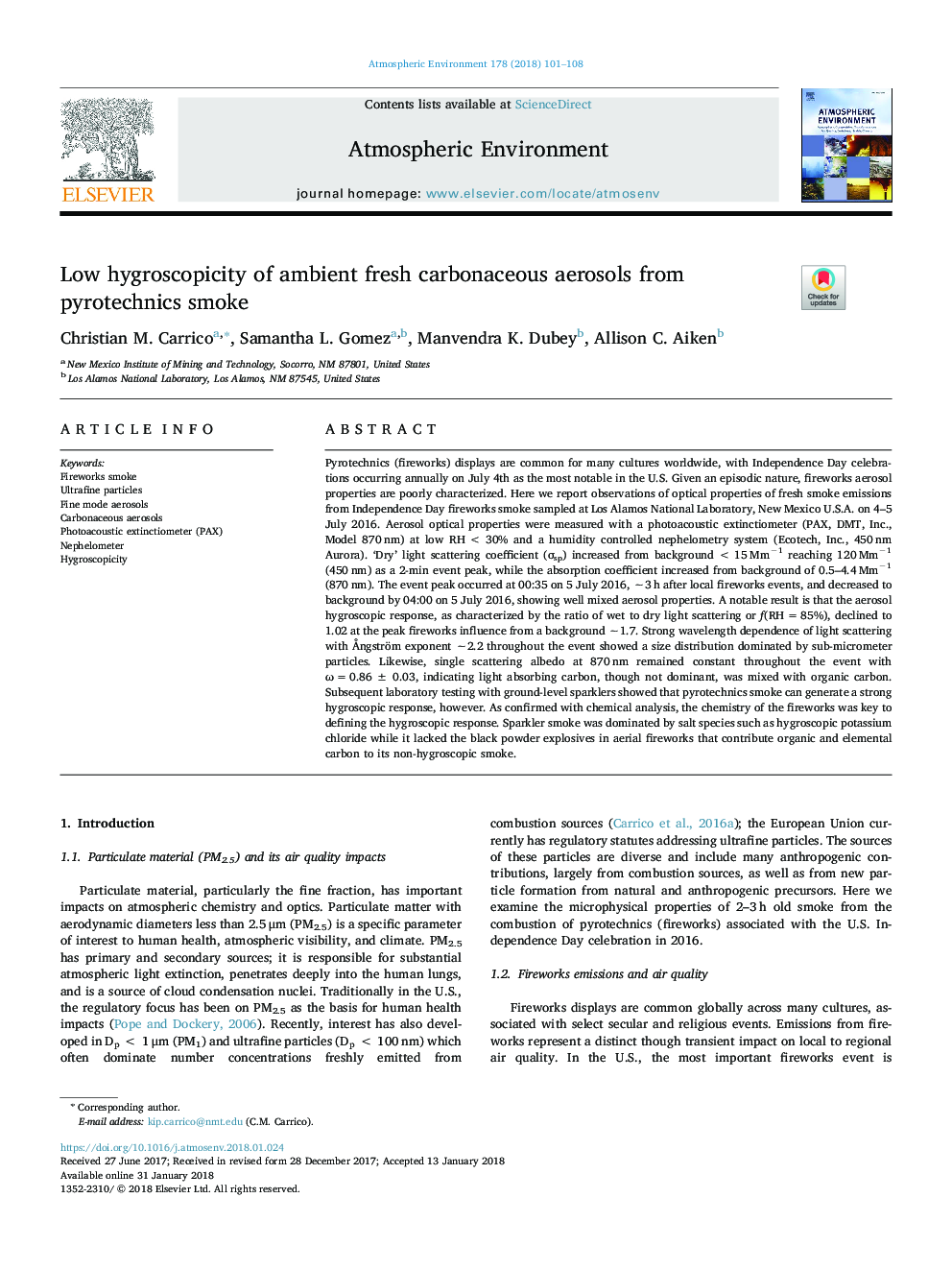| Article ID | Journal | Published Year | Pages | File Type |
|---|---|---|---|---|
| 8864013 | Atmospheric Environment | 2018 | 8 Pages |
Abstract
Pyrotechnics (fireworks) displays are common for many cultures worldwide, with Independence Day celebrations occurring annually on July 4th as the most notable in the U.S. Given an episodic nature, fireworks aerosol properties are poorly characterized. Here we report observations of optical properties of fresh smoke emissions from Independence Day fireworks smoke sampled at Los Alamos National Laboratory, New Mexico U.S.A. on 4-5 July 2016. Aerosol optical properties were measured with a photoacoustic extinctiometer (PAX, DMT, Inc., Model 870â¯nm) at low RHâ¯<â¯30% and a humidity controlled nephelometry system (Ecotech, Inc., 450â¯nm Aurora). 'Dry' light scattering coefficient (Ïsp) increased from backgroundâ¯<â¯15â¯Mmâ1 reaching 120â¯Mmâ1 (450â¯nm) as a 2-min event peak, while the absorption coefficient increased from background of 0.5-4.4â¯Mmâ1 (870â¯nm). The event peak occurred at 00:35 on 5 July 2016, â¼3â¯h after local fireworks events, and decreased to background by 04:00 on 5 July 2016, showing well mixed aerosol properties. A notable result is that the aerosol hygroscopic response, as characterized by the ratio of wet to dry light scattering or f(RHâ¯=â¯85%), declined to 1.02â¯at the peak fireworks influence from a background â¼1.7. Strong wavelength dependence of light scattering with Ã
ngström exponent â¼2.2 throughout the event showed a size distribution dominated by sub-micrometer particles. Likewise, single scattering albedo at 870â¯nm remained constant throughout the event with Ïâ¯=â¯0.86â¯Â±â¯0.03, indicating light absorbing carbon, though not dominant, was mixed with organic carbon. Subsequent laboratory testing with ground-level sparklers showed that pyrotechnics smoke can generate a strong hygroscopic response, however. As confirmed with chemical analysis, the chemistry of the fireworks was key to defining the hygroscopic response. Sparkler smoke was dominated by salt species such as hygroscopic potassium chloride while it lacked the black powder explosives in aerial fireworks that contribute organic and elemental carbon to its non-hygroscopic smoke.
Related Topics
Physical Sciences and Engineering
Earth and Planetary Sciences
Atmospheric Science
Authors
Christian M. Carrico, Samantha L. Gomez, Manvendra K. Dubey, Allison C. Aiken,
